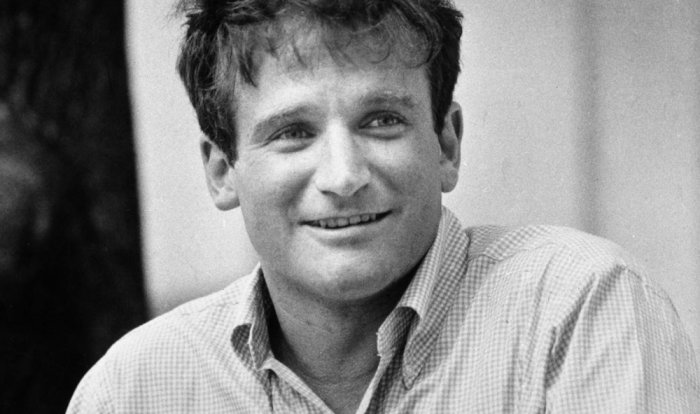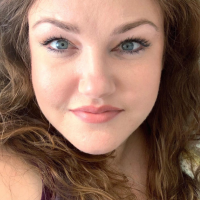When I watched my first Robin Williams movie, “Mrs. Doubtfire,” I was six years old.
I had never thought about suicide. I didn’t know what suicide was until a few years later, when my uncle would take his own life.
When I followed Robin Williams’ footsteps and moved to Los Angeles and began a professional acting career, I was 22 years old. I had struggled with depression in my teenage years—what would later be diagnosed as bipolar type two. I had thought about how I would want to die if I ever did kill myself, but it was a thought that was far away from me.
By the time Robin Williams took his life on August 11, 2014, the depression I had experienced as a teenager had begun creeping back in. His suicide brought a stark, brick-to-the-face realization that someone who had what all of us actors running around Los Angeles were working for—a successful career—still needed a way out.
The thought terrified me. It suddenly occurred to me that what I was chasing after may never be enough to keep me here.
Shortly after, I was asked in an interview where I saw myself in five years. I served up some answer about playing more serious roles as opposed to the strippers and bimbos I was being sent out for at the time. But when I gave the question some serious thought that night, I knew in five years I would likely be dead—either from the eating disorder I was suffering or due to my depression.
Four years later, I’m crawling out of what my therapist tells me was an inevitable crash. I spiraled to what I thought was my rock-bottom, only to spiral further, over and over.
I’ve spent much of my time actively suicidal, and more of it passively suicidal. I’ve made plans. I’ve made sure I had the means to follow the plans through. I’ve been hospitalized and also lived on my parents’ couch for safety.
But mostly, through it all, I’ve learned. I’ve learned and researched and soaked up more about depression and suicide than I ever thought possible.
I’ve learned that suicide is most often not a choice. By the time you reach a certain threshold with suicidality, your brain processes the world through a lens that convinces you it’s the only solution. The only one.
Logic is no longer available to you; thinking and evaluating your situation with logic is not an option. Every road leads to suicide offering the only reasonable solution.
You being dead is mentally and emotionally the only outcome you can make sense of; with every cell in your body it feels right. I’ve experienced so many moments when dying has simply felt like the right thing to do, the reasonable next step. That’s the lens your brain sees through when you’re in that space.
I’ve learned that suicide is not selfish, as an overwhelming majority of the population who don’t understand suicide believe it is. One of my own family members used to be in this camp, until they went through the experience of close family members struggling with severe depression and suicidality.
Calling suicide selfish is like calling depression a bad day. It diminishes and disregards the seriousness and severity of the pain the person was desperately trying to end and places an inappropriate label on them and the situation.
Suicide is not a gesture made out of selfishness. It is not made to hurt others; it is made to end the immense pain one has lived in for too long. To end the suffering. End the torment. Wanting to end pain is human nature, and as such is a natural reaction to living deeply in pain. Suicide is many things—selfish not being one of them.
I’ve learned that suicide affects so many, who talk about it so little. Everyone knows someone who has been touched by suicide, even if they don’t know they know them. The stigma is still so strong, and we’re still so afraid to talk about it.
What are we afraid of? Afraid talking about it makes it real? Makes it acceptable? Are we embarrassed about it? Ashamed?
Talking about suicide brings awareness and resources to light to help more and more who are struggling and thinking about suicide to a) feel less alone, and b) have the increased opportunity to reach out for and find help. The statistics of suicide alone prove that it’s happening more than we think, and, by the sheer numbers, it’s happening to the families and friends of people we know and interact with in our everyday lives.
I’ve learned what someone in the mental health advocacy field that I look up to, Kevin Hines, calls “the Ripple Effect.” The idea that one affects many and the effect continues to ripple on.
The strength of the ripple effect hit me head-on when a colleague of mine killed himself in 2016. We weren’t particularly close, but his death affected me severely. At the time, I was struggling under the surface of a smile with relentless depression and the beginning of suicidal thoughts.
When Byron killed himself, I saw so much of myself in him that it scared me into finally getting help—a positive manifestation of the ripple effect.
But maybe, above all, with the research I’ve done and the statistics I’ve found and the articles I’ve read, I’ve learned the hard, personal lesson that suicide and suicidal thoughts can happen to anyone. No one is immune.
Having experienced how little has been in between myself and dying (at times, it was my dog who kept me here, at times my parents’ couch, at times nothing but sleeping to avoid the thoughts telling me to kill myself), I know what it means to slip from being a generally mentally stable person into the despair that is suicidality.
It can happen to anyone, regardless of how “put together” they and their life seem to be.
Living with suicidal thoughts and urges is hard enough; battling a mind that wants to die every day and living in shame is near impossible.
Doing our part to educate ourselves can reduce the stigma and judgment surrounding the topic of suicide and give the hundreds of thousands who are part of the rising suicide statistics the opportunity to reach out without shame.
And that opportunity saves lives—including mine.
~












Read 17 comments and reply